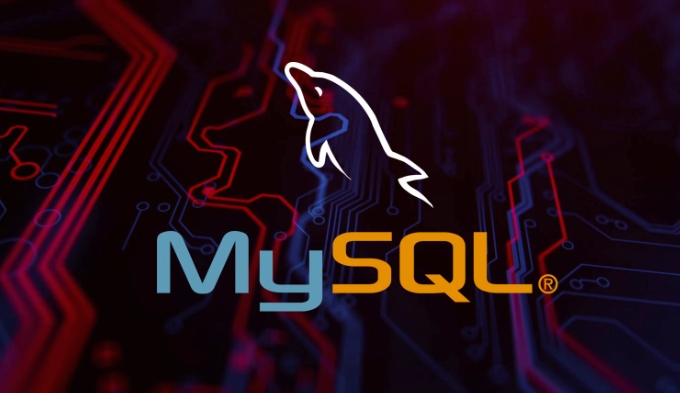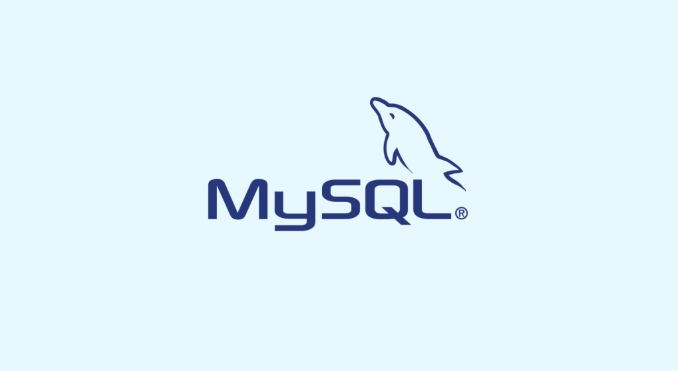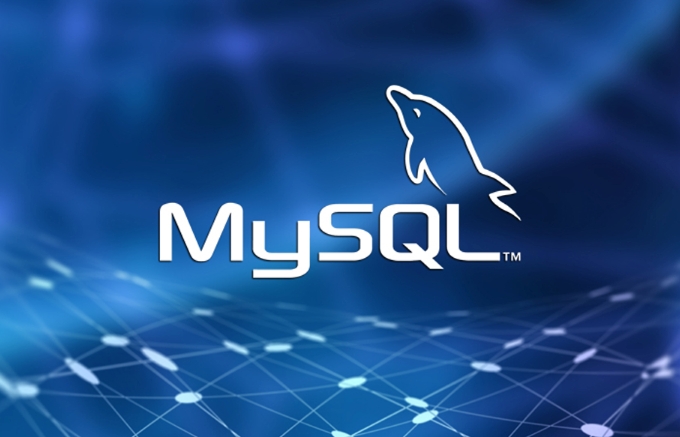How to add the MySQL bin directory to the system PATH
Jul 01, 2025 am 01:39 AMTo add the MySQL bin directory to the system PATH, it needs to be configured according to the different operating systems. 1. Windows system: Find the bin folder in the MySQL installation directory (the default path is usually C:\Program Files\MySQL\MySQL Server XX\bin), right-click "This Computer" → "Properties" → "Advanced System Settings" → "Environment Variables", select Path in "System Variables" and edit it, add the MySQL bin path, restart the command prompt after saving and enter mysql --version verification; 2. macOS and Linux systems: Bash user edits ~/.bashrc or ~/.bash_profile, Zsh user edits ~/.zshrc, add export PATH="/usr/local/mysql/bin:$PATH", and execute source after saving The command makes the configuration take effect and uses echo $PATH to check whether the MySQL path has been included; common problems include path errors, unrefreshed shells, confusion between user variables and system variables, multi-version conflicts, etc., and you need to check one by one to ensure that the configuration is correct and effective.

After MySQL is installed, many command-line operations need to enter the bin directory to run MySQL tools, such as mysql , mysqldump , etc. In order to avoid manually switching paths every time, adding MySQL's bin directory to the system PATH is a very practical operation. The following explains how to set it up according to different operating systems.

How to add MySQL bin to PATH on Windows system
On Windows, setting PATH through environment variables is most common. Find the bin folder in the MySQL installation directory (the default path is usually C:\Program Files\MySQL\MySQL Server XX\bin ), and follow the following steps:

- Right-click "This Computer" or "My Computer" and select "Properties"
- Click "Advanced System Settings" on the left
- Click "Environment Variable" in the pop-up window
- In the System Variables area, find and select
Path, click Edit - Click "New" and enter the
binpath of MySQL - Continuously point "OK" to save all settings
After completion, open a new command prompt window and enter mysql --version to test whether it takes effect. If the version information is displayed, the configuration is successful.
How to add PATH on macOS and Linux systems
macOS and Linux usually use Bash or Zsh as the default shell, and the configuration method is similar, mainly modifying the configuration file of the corresponding shell.

Bash User:
Edit the ~/.bashrc or ~/.bash_profile file and add the following content:
export PATH="/usr/local/mysql/bin:$PATH"
Zsh User:
Edit the ~/.zshrc file, and add the above line of code.
After saving, execute source ~/.bashrc or source ~/.zshrc to make the configuration take effect immediately. You can use echo $PATH to see if the current PATH contains the MySQL path.
Note: The MySQL installation locations may be different in different systems. You can use
which mysqlor find the installation directory to confirm the actual path.
Frequently Asked Questions and Notes
Sometimes, PATH is clearly set, but the command is still unrecognized. This may be caused by the following reasons:
- The path is written incorrectly : for example, there are too many spaces, misspellings, or using backslashes
\instead of forwardslashes/ - The shell has not been refreshed : remember to run the
sourcecommand after modifying the configuration file, otherwise the new terminal will take effect - User variable vs System variable : Is the current user's PATH or system level set under Windows? Make sure you added it in the correct variable
- Multi-version conflict : If multiple MySQL or MariaDB are installed in the system, there may be command conflicts. You can use
which mysqlto check which path the executable file is called.
Basically that's it. The whole process is not complicated, but some details are easy to ignore, especially the issues of paths and shell types. As long as you check it step by step, it can usually be done.
The above is the detailed content of How to add the MySQL bin directory to the system PATH. For more information, please follow other related articles on the PHP Chinese website!

Hot AI Tools

Undress AI Tool
Undress images for free

Undresser.AI Undress
AI-powered app for creating realistic nude photos

AI Clothes Remover
Online AI tool for removing clothes from photos.

Clothoff.io
AI clothes remover

Video Face Swap
Swap faces in any video effortlessly with our completely free AI face swap tool!

Hot Article

Hot Tools

Notepad++7.3.1
Easy-to-use and free code editor

SublimeText3 Chinese version
Chinese version, very easy to use

Zend Studio 13.0.1
Powerful PHP integrated development environment

Dreamweaver CS6
Visual web development tools

SublimeText3 Mac version
God-level code editing software (SublimeText3)

Hot Topics
 What is a typical process for MySQL master failover?
Jun 19, 2025 am 01:06 AM
What is a typical process for MySQL master failover?
Jun 19, 2025 am 01:06 AM
MySQL main library failover mainly includes four steps. 1. Fault detection: Regularly check the main library process, connection status and simple query to determine whether it is downtime, set up a retry mechanism to avoid misjudgment, and can use tools such as MHA, Orchestrator or Keepalived to assist in detection; 2. Select the new main library: select the most suitable slave library to replace it according to the data synchronization progress (Seconds_Behind_Master), binlog data integrity, network delay and load conditions, and perform data compensation or manual intervention if necessary; 3. Switch topology: Point other slave libraries to the new master library, execute RESETMASTER or enable GTID, update the VIP, DNS or proxy configuration to
 How to connect to a MySQL database using the command line?
Jun 19, 2025 am 01:05 AM
How to connect to a MySQL database using the command line?
Jun 19, 2025 am 01:05 AM
The steps to connect to the MySQL database are as follows: 1. Use the basic command format mysql-u username-p-h host address to connect, enter the username and password to log in; 2. If you need to directly enter the specified database, you can add the database name after the command, such as mysql-uroot-pmyproject; 3. If the port is not the default 3306, you need to add the -P parameter to specify the port number, such as mysql-uroot-p-h192.168.1.100-P3307; In addition, if you encounter a password error, you can re-enter it. If the connection fails, check the network, firewall or permission settings. If the client is missing, you can install mysql-client on Linux through the package manager. Master these commands
 Why do indexes improve MySQL query speed?
Jun 19, 2025 am 01:05 AM
Why do indexes improve MySQL query speed?
Jun 19, 2025 am 01:05 AM
IndexesinMySQLimprovequeryspeedbyenablingfasterdataretrieval.1.Theyreducedatascanned,allowingMySQLtoquicklylocaterelevantrowsinWHEREorORDERBYclauses,especiallyimportantforlargeorfrequentlyqueriedtables.2.Theyspeedupjoinsandsorting,makingJOINoperation
 What are the transaction isolation levels in MySQL, and which is the default?
Jun 23, 2025 pm 03:05 PM
What are the transaction isolation levels in MySQL, and which is the default?
Jun 23, 2025 pm 03:05 PM
MySQL's default transaction isolation level is RepeatableRead, which prevents dirty reads and non-repeatable reads through MVCC and gap locks, and avoids phantom reading in most cases; other major levels include read uncommitted (ReadUncommitted), allowing dirty reads but the fastest performance, 1. Read Committed (ReadCommitted) ensures that the submitted data is read but may encounter non-repeatable reads and phantom readings, 2. RepeatableRead default level ensures that multiple reads within the transaction are consistent, 3. Serialization (Serializable) the highest level, prevents other transactions from modifying data through locks, ensuring data integrity but sacrificing performance;
 How to add the MySQL bin directory to the system PATH
Jul 01, 2025 am 01:39 AM
How to add the MySQL bin directory to the system PATH
Jul 01, 2025 am 01:39 AM
To add MySQL's bin directory to the system PATH, it needs to be configured according to the different operating systems. 1. Windows system: Find the bin folder in the MySQL installation directory (the default path is usually C:\ProgramFiles\MySQL\MySQLServerX.X\bin), right-click "This Computer" → "Properties" → "Advanced System Settings" → "Environment Variables", select Path in "System Variables" and edit it, add the MySQLbin path, save it and restart the command prompt and enter mysql--version verification; 2.macOS and Linux systems: Bash users edit ~/.bashrc or ~/.bash_
 How to install MySQL on Windows 11
Jun 29, 2025 am 01:47 AM
How to install MySQL on Windows 11
Jun 29, 2025 am 01:47 AM
The key steps for installing MySQL on Windows 11 are as follows: 1. Download the correct version, select the Windows MSI installation package and ensure that the system is 64-bit; 2. Select the "Custom" mode during installation, add MySQLServer and set the appropriate installation path; 3. Run the configuration wizard, select the "ServerComputer" configuration type, set the root password, and select the automatic startup method; 4. After the test installation is successful, if the prompt command is unavailable, add the MySQL bin directory to the system PATH environment variable. Follow these steps to complete the installation and configuration smoothly.
 Resetting the root password for MySQL server
Jul 03, 2025 am 02:32 AM
Resetting the root password for MySQL server
Jul 03, 2025 am 02:32 AM
To reset the root password of MySQL, please follow the following steps: 1. Stop the MySQL server, use sudosystemctlstopmysql or sudosystemctlstopmysqld; 2. Start MySQL in --skip-grant-tables mode, execute sudomysqld-skip-grant-tables&; 3. Log in to MySQL and execute the corresponding SQL command to modify the password according to the version, such as FLUSHPRIVILEGES;ALTERUSER'root'@'localhost'IDENTIFIEDBY'your_new
 Handling NULL Values in MySQL Columns and Queries
Jul 05, 2025 am 02:46 AM
Handling NULL Values in MySQL Columns and Queries
Jul 05, 2025 am 02:46 AM
When handling NULL values ??in MySQL, please note: 1. When designing the table, the key fields are set to NOTNULL, and optional fields are allowed NULL; 2. ISNULL or ISNOTNULL must be used with = or !=; 3. IFNULL or COALESCE functions can be used to replace the display default values; 4. Be cautious when using NULL values ??directly when inserting or updating, and pay attention to the data source and ORM framework processing methods. NULL represents an unknown value and does not equal any value, including itself. Therefore, be careful when querying, counting, and connecting tables to avoid missing data or logical errors. Rational use of functions and constraints can effectively reduce interference caused by NULL.






